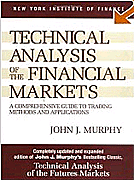Forecast 2007
Forecast 2007 | |||||||||||||||||||||||||||||||||||||||||||||||||||||||||||||||||||||||||||||||||||||||||||||||||||||||||||||||||||||||||||||||||||||||||||||||||||||||||||||||||||||||||||||||||||||||||||||||||||
| Offering an annual forecast has to be one of the biggest mug's games on both Wall Street and Bay Street. That doesn't prevent many from trying. At least nobody claims to have a crystal ball or mystic powers. We certainly don't. But if there is one thing we have learned about technical analysis, it is that patterns repeat themselves. And that forms the essence of our forecasts. W.D. Gann, the famed technical analyst of the early 20th century, showed that he could accurately determine the points at which stocks or commodities should rise or fall within a given time. We confess we are not experts on W.D. Gann. But we do follow Gann experts such as Michael Jenkins of Stock Cycles Forecast (www.stockcyclesforecast.com). So his thinking does creep into our writings and we certainly appreciate what we have learned from Mr. Jenkins. But we also read a lot of other material and try to maintain a broad perspective. And it is that perspective that we hope forms the basis of our writings. Market performance in 2006 has exceeded most forecasts. After the rather flat year of 2005, expectations were not high for 2006 being much better, although Abby Joseph Cohen of Goldman Sachs predicted 1,400 for the S&P 500 (and she was pretty close). In May the market started to fall, raising the spectre that the four-year presidential cycle of market troughs was getting under way. Even after the market rallied back in July, the expectation was that if the four-year trough was indeed commencing, the rally would not last. We cited the 60-year cycle that showed a secondary top in August following a major top in May 1946, and then a sharp collapse into October. It didn't happen this time. The Record to Date 2006 - To December 15, 2006
Instead the bulls have continued to follow the 1936 bull market that just kept going up into year end with barely a pause. Last year we noted "So 1936 might be worth a look given the continued flow with the 1930's cycle (70 years)". In 1936 the mid-year pause occurred in April/May and after that it was almost straight up into year end. Indeed, after a brief pause in December 1936 the market continued its amazing rise into early March 1937. After that it was lights out for five years as the 1937-38 bear market wiped out over 50 per cent of market values, and despite some rolling around over the next few years the final bottom did not occur until 1942. Almost forgotten in the market euphoria since last July is that the energy, precious metals, and metals and mining sectors have also had a good year. They too topped in April/May along with the broad market but that has been largely it ever since, except for the metals and mining sector that just kept going up. The TSX Metals & Mining sector was showing a spectacular 72.9 per cent gain at December 15. While the TSX Energy Index lagged at +3.2 per cent on the same date, its bigger US cousin the XOI Index was up a sharp 24.4 per cent despite Natural Gas struggling all year (down 29 per cent). Silver was also a big performer. up 48.3 per cent. The Gold Bugs Index gained 22.5 per cent and the TSX Gold Index 27.5 per cent. The gains in the commodity sectors overwhelm the gains in the broader market, but since they have been generally down since topping in April/May it has felt as if they were poor performers this past year. Not so. Since 2000 the commodity, energy and precious metals sectors have solidly outperformed the broad market. The S&P 500 is still about eight per cent under its highs of 2000 and the NASDAQ has not recouped even 38.2 per cent of its huge 2000-02 collapse. The Dow Jones Industrials has seen new highs but it has been a lonely walk. The seventh year of the decade has a decidedly mixed record. The record for the Dow Jones Industrials since inception is a dead heat of six up and six down. It doesn't particularly help us if the prior year (ending in 6) was an up year or a down year. When years ending in 6 were up (seven times), the year ending in 7 was down four times and up three times, including the past two. When years ending in 6 were down (five times) the year ending in 7 was up three times and down twice (and down big, both times). The coming year will be the third year of George W. Bush's second semester. There were eight other presidents who enjoyed second terms since the inception of the Dow Jones Industrials. Here the record clearly favours the bulls with six up and two down. It is also a pre-election year and the general record for the market shows that the first 6-7 months tend to outperform. Typically the incumbent President is opening up the spending spigots in order to stimulate the economy in the prior year to the election to help increase the odds of re-election. With the record of years ending in 7 a dead heat, following an up year in 6 slightly favouring the bears, the third year of a second-term president favouring the bulls, and a the pre-election year also favouring the bulls we have to turn to our key cycles to look for a hint of what is to come for 2007. Michael Jenkins has always emphasized the importance of the 100-year cycle. One hundred years ago we had the San Francisco earthquake (April 1906) and a financial panic known as the "poor man's panic" in 1907. This time, a few months earlier, we had the New Orleans hurricane disaster in September 2005. The housing market did not begin its collapse until several months later. With housing supply clearly exceeding demand we do not believe the bottom has been seen. The economic fall out is being delayed and 2007 might soon bear the brunt of that collapse. Thirty years after 1907 came the 1937 collapse that wiped out most of the 1932-33 advance. And 30 years ago, in 1977, the market collapsed on the back of huge (for those days) trade deficits, a sharply falling US dollar and rising interest rates. Ninety years ago, in 1917, WW1 was raging. The USA entered the war in April 1917. In May the draft started and the market kept falling all year long. Now we are hearing that they are talking about increasing troop numbers in Iraq instead of withdrawing and we read they are preparing plans for a military draft. We are reminded that US warships continue to gather in the Persian Gulf, offshore from Iran. The US has been in a bellicose, off-and-on spitting match for years over Iran's nuclear program, most recently with its volatile President Mahmoud Ahmadinejad. One of the bullish cases for the market in 2007 is the master 60-year cycle that saw a small up year in 1947. But that followed a down year in 1946. The 10-year cycle is also encouraging, as 1997 was a very sharp up year. But the 10-year Japanese cycle is very negative as the Tokyo Nikkei Dow collapsed in 1997-98 following an up year in 1996. The four-year presidential cycle that was due to bottom in 2006 also has an interesting history. On occasions it has not worked, as we have seen in 2006. The last time we stretched out was 1982-87 where the market kept rising into 1987 before the famous stock market crash that October. The 1932-37 market also stretched further than expected. Of course, what followed was a huge collapse in 1937-38. We also found that the market stretched in 1912-17 and the 1917 collapse was quite vicious. The lesson seems to be that while we can get through the fourth year without making our trough, we do not survive the fifth year without paying for it. We remind everyone that we still have our major long-term cycles in play. The cycles outlined by Ray Merriman of MMA Cycles Report (www.mmacycles.com) include a 90-year cycle and a 72-year cycle that in turn sub-divide into 36-year and 18-year cycles. He believes both the 90-year and 72-year cycles bottomed at the time of the Great Depression in 1932. If so, then the 72-year cycle low is due 2004 +/- 12 years and the 90-year cycle is due 2022 +/- 15 years. The two overlap from roughly 2007 to 2016, so we are just entering that time period now. The 36-year cycle last bottomed in 1974 and has a range of 30-42 years. The current 36-year cycle low is due during 2004-16. Finally, an 18-year cycle low with a cycle range of 15-21 years last occurred in 1987. It is due to unfold 2002-08, so it is possible that one bottomed in 2002. The next one would be due between 2017 and 2023, which is also the outer range of the 90-year cycle. Our presidential four-year cycle falls within the context of the 18-year cycle, where Merriman notes there are usually five of them. As we noted, the current one was due in 2006 but the cycle does have an observed range of 36-56 months. The low therefore could occur as late as June 2007. It is possible that the drop seen into June/July 2006 was the four-year cycle low. If so, it had to have been one of the most shallow on record. The drop on the S&P 500 was only eight per cent. The 1998 four-year cycle low drop, for example, was 21.6 per cent. But the 1994 four-year cycle low fall was only about 10 per cent, so it is possible. Given the low volatility as measured by the VIX indicator and the current high bullish consensus factor, we doubt that the low has occurred. But the thought can not be dismissed and we recognize that the low volatility (as measured by the VIX) can continue for some time. There is also the well-known Kondratieff Wave that has an observed range of 50-60 years. The consensus last bottom for the previous Kondratieff Wave was 1949, so once again we are in the range for its trough. The Kondratieff Wave has generally approximated to the life span of a man, and with man living longer, it is possible that this one could extend and fit more with the longer 72-year and 90-year year cycles.
Ten-Year Stock Market Cycle
* to December 15. If our outlook for the stock market is cloudy to negative for 2007, we can't help but notice that many analysts continue to view it with great optimism. Their thoughts should not be ignored. If there is one thing we have learned, it is that nothing plays out as you expect. While all of the cycles have in the past worked, there are forces at work against these cycles. There we are reminded of Alan Greenspan, who as a student of the Kondratieff Wave once declared that if he ever became chairman of the Federal Reserve, he would stave off the Kondratieff winter by various means such as injecting money into the system or supporting the dollar, etc. Of course he did become Fed chairman, and money supply and debt both exploded on his watch. Money supply (the old M3) about tripled, as did the official US debt. What this indicates is that during the Greenspan years there were huge injections of liquidity (which are continuing in the Bernanke years and who can forget Bernanke's declaration that if the economy was in trouble he would drop money from helicopters). While the growth of debt and money in the USA has been a key provider, it has not been done by the Fed alone. Japan has also been a big provider of liquidity over the past several years. These huge liquidity injections played a major role in the internet/technology bubble of the late 1990s and again in the housing bubble in the early part of this decade. That both have now been pricked does not mean that the ability to inject liquidity into the system has been halted. Indeed, it may be heightened. We don't always agree with the economic team of Louis and Charles Gave and Anatole Kaletsky (GaveKal - www.gavekal.com) but we do pay attention. In a recent writing of GaveKal Five Corners (December 13, 2006) they commented on the low volatility in the economy and how that has contributed to the high leverage. We agree that a highly volatile economy encourages savings and a low volatility economy encourages spending. Combined, of course, we have both a low volatility stock market and a low volatility economy - the best of all worlds. GaveKal attests all of this to our "Brave New World" of globalization, allowing corporations to expand around the world and concentrate on what adds the most value: financial management of balance sheets both for the corporation and the individual, freeing up capital; and evolution from an industrial society to a knowledge-based society; and that ideas can be generated using a lot less capital. Combine this with the liquidity booms that have occurred, particularly since the 1980s following the steep recession of 1980-82, and then it all becomes understandable. Huge liquidity expansions were seen 1984-86, 1993-94, 1997-99, 2002-04, and another may have begun in 2005-06 (coinciding with the end of reporting of M3). All corresponded with a sharply rising stock market. Liquidity contractions were seen 1980-84, 1988-92, 2000-02 and very briefly in 2004. They corresponded better with stock market corrections either concurrently or shortly thereafter. It is for these reasons that GaveKal remains quite bullish into 2007. They also believe that stocks remain quite cheap. Having seen other forecasts from other analysts, we know that GaveKal is not alone in the bullish camp. But we are also reminded that chairman Greenspan said that "History has not dealt kindly with the aftermath of protracted periods of low risk premiums". And a protracted period of low volatility such as we have seen in both the stock market and the economy is inevitably followed by a period of high volatility. Has gold already discovered that? Since December 31, 1999 the Dow Jones Industrials is up 8.9 per cent, the S&P 500 is down 3.0 per cent, the NASDAQ is down 40 per cent and the US Dollar Index is down 18 per cent. On the other hand, gold is up 114 per cent, silver is up 132 per cent and the Gold Bugs Index (HUI) is up 363 per cent. Oil is up 147 per cent, Natural Gas is up 203 per cent, and the AMEX Oil Index (XOI) is up 141 per cent. We could go on about other commodities, and the metals and mining stocks as well, all which have enjoyed at least 100 per cent gains this decade. Even if GaveKal is right about 2007, these sectors should continue to outperform. Despite a six/seven month intermediate mini-bear occurring in precious metals and energy, they have still outperformed the broad market this past year. Commodities, precious metals and energy all entered new major bull markets between 1998 and 2002. From roughly 1980 to 2000 these sectors were in a major bear market while the broad market was enjoying an 18-year bull market from 1982 to 2000. In 1947, Edward Dewey and Edwin Dakin published a book entitled Cycles - The Science of Predictions.They detailed a 54-year cycle in wholesale prices going back to 1790. (This study ties in nicely with the work of Nicolas Kondratieff). As a part of their study they predicted the future timing of peaks and troughs in wholesale commodity prices. Each rise and fall is roughly 27 years. Not surprisingly, their last peak prediction was for 1979 and their most recent trough prediction was for 2006. Commodity prices peaked in 1980, while the trough may have occurred early from 1998 to 2002. If Dewey and Dakin are correct, then we have entered a multi-year bull market in commodities (including metals, precious metals and energies). The next idealized peak would be due in 2033. There will of course be sharp corrections during this long up period, which will shake many out. But the long-term trend seems to be established and these periods of corrections are buying opportunities. Gold has an 8.5-year cycle (all cycles are credited to Ray Merriman) and probably a 25-year cycle. It is believed that the last 8.5-year and 25-year cycles both bottomed in 2001 - this also fits well with Dewey and Dakin. This means the next 8.5-year cycle trough is not due until 2008-11. If there is an 8.5-year cycle there probably is a half-cycle of 4.25 years. We believe that happened in July 2005. Another subset for gold is an 18.5-month cycle. If July 2005 was both a 4.25-year cycle low and an 18.5-month cycle low, then the next 18.5-month cycle is due anywhere from October 2006 to March 2007. After this low we should embark on another strong up move in gold. If it is accompanied by a wave of liquidity injections, the next move in gold could be spectacular. Based on the current triangle pattern that appears to be forming, a move to $1,000 is not out of the question - quite possibly in 2007.
Silver cycles are very similar although they do not necessarily overlap with gold. Silver may have already hit its cycle trough back in September 2006. Silver should target up to $20-$22 in 2007 if the triangular patterns prove correct. Oil has what appears to be a four-year cycle, with the last one occurring in early 2002. That meant the next one was due in 2006 (anywhere from late 2005 to late 2006). The recent lows in oil near $56 may have satisfied that requirement. However, until we firmly break out once again over $70 there remains the possibility of a move to lower lows under $50. Patterns forming on oil would suggest a move to at least $100 once new highs above $78 are made. At that level it then just equal the price of oil seen in 1980 on an inflation adjusted basis. Natural Gas cycles are quite irregular but appear to range from two to three years, trough to trough. A key cycle low may have been made here recently near $4.60. There is a possibility of a secondary low in spring 2007. Interestingly, Natural Gas, after each major low over the past several years, has shot up to new all-time highs each time. This would suggest that once the low is in, we could exceed the highs of 2005 at $15.78.
One of the keys for gold and the precious metals is the US dollar. The other major currencies (the euro and the yen) may have made important cyclical lows against the US dollar over the past few months. If so, then these lows were probably important four-year cycle lows and the US dollar should embark on another major move to the downside. We have targets that suggest a minimum of 72 for the US Dollar Index. We have heard stories already about the demise of the dollar and how the Chinese are preparing to dump their portfolio of US Treasuries. These stories actually are more likely to signal temporary lows in the dollar. The Chinese are not foolish enough to dump their entire portfolio of US Treasuries as it is not in their interests to do so. One has to remember that whatever the Chinese do will be in their own best interests. But technically, the dollar has already begun a decline. Even if is the desire of the US Fed to allow the dollar to decline further, powerful efforts will be made for it to be orderly. There remains a risk of course that things will get out of hand. Keep a sharp eye on trade discussions; the Doha round of global trade talks has already broken down. That doesn't mean they are dead, as powerful financial interests around the world do not want a US dollar collapse. An orderly decline, yes. A collapse, no. Our conclusions on market direction in 2007 are clear. While the broad market could survive until March, we believe that will be either the high or a secondary high. Following that we will begin a five-year bear market with a big portion of the collapse occurring in 2007-08, very similar to the collapse of 1937-38. Gold and precious metals should resume their bull runs in 2007, with an outside chance of gold running to $1,000 an ounce. Other commodities should also rise. Oil should resume its bull market once again once we break out over $70. The US dollar should go into decline, but we expect it to be orderly, with periodic sharp corrections. In early 2007 we will discuss many of the issues that may have an impact on the markets in 2007.
| |||||||||||||||||||||||||||||||||||||||||||||||||||||||||||||||||||||||||||||||||||||||||||||||||||||||||||||||||||||||||||||||||||||||||||||||||||||||||||||||||||||||||||||||||||||||||||||||||||
DavidChapman.com Charts and technical commentary by: David Chapman is a director of Bullion Management Services the manager of the Millennium BullionFund www.bmsinc.ca |
Labels: Richard Russell



















![[Most Recent Quotes from www.kitco.com] [Most Recent Quotes from www.kitco.com]](http://www.kitco.com/images/live/t24_au_en_usoz_6.gif)
![[Most Recent Quotes from www.kitco.com] [Most Recent Quotes from www.kitco.com]](http://www.kitco.com/images/live/au_go_0030_ny.gif)
![[Most Recent Quotes from www.kitco.com] [Most Recent Quotes from www.kitco.com]](http://www.kitco.com/images/live/au_go_0365_ny.gif)
![[Most Recent Quotes from www.kitco.com] [Most Recent Quotes from www.kitco.com]](http://kitconet.com/charts/metals/silver/t24_ag_en_usoz_4.gif)

















2 ΣΧΟΛΙΑ (COMMENTS):
Με τους φορκάστερ υπάρχει το εξής πρόβλημα: Κατα 80% θα κινηθουν τα πράγματα όπως τα προβλέπουν, σύμφωνα με τις πιθανότητές τους, αλλά μια στις δύο φορές δυστυχώς πέφτουν έξω :Ρ
Anyway, για τα χρόνια πολλά πόσταρα, τλκ συμπαθώ αυτό το μπλογκ όλο και πιο πολύ(το πρακολουθώ αρκετό καιρό), ας σε βρουμε τον καινούργιο χρόνο με περισσότερες δημοσιεύσεις!
Χρονια πολλά καλή χρονιά σε όλους! ;)
@arkas,
συμφωνώ απόλυτα με τη λογική σου, φίλε αρκά.
Και για να πάω λίγο πιό πέρα, σύμφωνα με τη contrarian λογική, θάπρεπε κανείς να βαδίζει ΑΝΤΙΘΕΤΑ προς τις γενικευμένες προβλέψεις για να αποκομίσει μεγαλύτερα κέρδη!
...και κατά πως δείχνουν -προς το παρόν βέβαια- τα πράγματα, η τοποθέτηση σε χρυσό και πολύτιμα μέταλλα (κυρίως άργυρο) είναι ένα ασφαλές contrarian στοίχημα (δεδομένου του ρυθμού αύξησης του Μ3 παγκοσμίως)...
Καλή Χρονιά με Υγεία και...
Καλά Κέρδη!
Post a Comment
<< Home